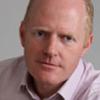This article describes the diagnosis and treatment for a painful shoulder. New treatments include minimally invasive keyhole surgery, which is also known as arthroscopy.
Contents
Introduction
The painful shoulder is a common problem. This can be related to injury but may also occur spontaneously. The diagnosis is still predominantly dependant on providing a good medical history. An examination of the affected shoulder will then help to confirm or further narrow the potential conditions. However, examinations can sometimes be confusing for those who do not commonly deal with the shoulder. There are several possible tests but the majority are not sufficiently specific and/or sensitive. Investigations, such as x-rays, ultrasound scans and now MRIs, have given us the opportunity to confirm the diagnosis and be in a position to advise on the best possible treatment option.
What is arthroscopy?

The term arthroscopy refers to keyhole surgery of the shoulder. It was popularised in the 1980s and was initially used predominantly as a diagnostic procedure. Shoulder arthroscopy has provided us with the opportunity to investigate the shoulder in a dynamic way and has identified diagnoses that were not previously known or understood, such as an SLAP lesion, which is a tear of the cartilage on top of the socket; and posterior impingement, which is pinching of tissue beween bone (common in throwing athletes).
Today, although the use of arthroscopy for diagnosis purposes has diminished (due to the development of non-invasive methods), it remains a vital tool in our armoury. At the same time, most therapeutic shoulder operations can now be performed arthroscopically. This has become possible thanks to the pioneering work performed by our predecessors and due to advances in technology and equipment.
Shoulder pain
It is not uncommon to have shoulder pain that has been labelled as ‘Frozen Shoulder’ by the generalists. However, this term usually refers to a particular condition also known as ‘Adhesive Capsulitis’. This is only one of many conditions that can cause pain in the shoulder. Other conditions you may hear of include shoulder impingement, bursitis, tendonitis, instability or dislocations, rotator cuff disease or tendon tear.
Medical history
It is important to be able to give a detailed medical history. Several factors such as your age, the onset and timing of pain, associated stiffness and a history of injury not only help to provide a diagnosis but can also determine the course of treatment. It is important to remember that an injury to the shoulder may lead to fracture, tendon tear or dislocation. If a shoulder remains very painful or lacks movement after an injury, despite adequate rest and a normal x-ray, then tendon or ligament injury is suspected. In these situations it is important to seek expert medical advice.
Treatment

In the majority of cases, non-surgical treatment should be considered first. This may include rest and pain killers, activity modification and physiotherapy. For certain conditions, such as bursitis or tendonitis, shoulder injection can be considered. In the situation where these treatments fail to improve the symptoms or may not be appropriate, then surgery should be considered.
What are the benefits of arthroscopy?
This type of surgery not only offers the patient very small scars, it also improves the pain after surgery. This leads to faster recovery and earlier discharge, allowing the patient to recuperate in the comfort of their own home. With the exception of shoulder replacement for arthritis and fracture fixation, most shoulder conditions can now be treated arthroscopically.





